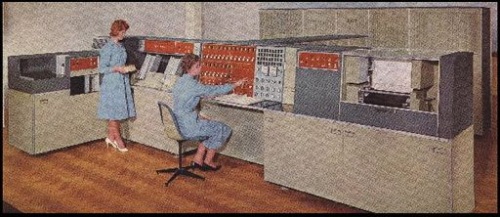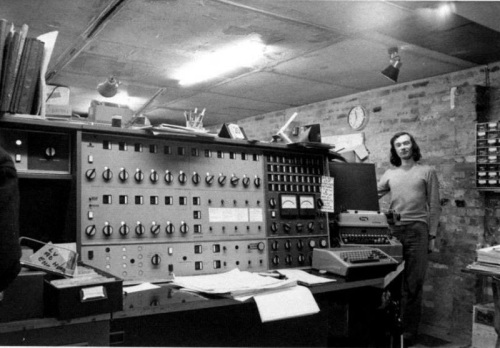The National Museum of Computing has taken on what can only be described as a gargantuan hobbyist project: rebooting Flossie the Computer.

Dr. David Hartley and Rod Brown with a part of Flossie.
The machine, which weighs close to five tons and has a 20-by-23-ft footprint, was one of the first computers designed specifically for use by businesses rather than scientific institutions.
“Before this time, computers were absolutely huge with valves and thousands of vacuum tubes and would get incredibly hot, making them difficult to house in a normal business,” museum trustee Kevin Murrell told the BBC. “But this machine used transistors, which used very little power. That meant you could have more of them in the same space, you didn't need the complex cooling equipment and you wouldn't require the high power that earlier computers needed.”
Flossie came with a punch-card reader and printer built into its body, both of which were used to enter and save data by creating holes in a piece of paper, making it not only power efficient but task efficient too.

Originally Flossie computer in use.
“For medium-sized companies that wanted to computerize their invoicing, their accounting or their payroll, this gave them the help to do that,” Murrell added.
Some other fun facts about the famous computer:
Power consumption : max 13 KW of three-phase power, idle 6.2 KW
Number of logic PCBs: just over 4 thousand plus 1 single valve
Number of transistors: over 16 thousand
Number of logic bays: 22
Internal Speed: 1 MHz by 4 bits = 4-MHz data rate
Number of bits per word: 48 + parity ( format = hexadecimal)
Number of bytes in main (core) store: 12,000
Number of bytes on a single drum store: 72,000
Max number of drums: 8
Integrated card reader: 600, 80 column cards per min
Integrated line printer: 600 lines per min by 120 print positions
Integrated card punch: 100 80-column cards per min
Additional paper tape reader: 1,000 characters per second
Magnetic tape (as fitted ): approx 10 Mbytes per reel
Max number of magnetic tape decks: 8
Plus ability by software to drive any single ICT 1900 device
Number of indicator lights on Console: 252
Number of relays to switch power: over 24
Flossie was originally purchased by the University of London in the 1960s to assist with accounting duties and administration tasks, and to help generate exam results for students.

Stuart Fyfe with 1970s-era Flossie computer.
After a few years of use, it was sold at scrap metal value to a group of students before ending up at a farm, whose owner eventually decided to donate the machine to the museum.
Over the years, more than 150 copies of the computer were created. These other editions were later used as props in various movies and shows, including Doctor Who , The Pink Panther , and the James Bond movie, The Man with the Golden Gun .
It is believed that only three of these machines remain today, all of which are considered to be in a physical state beyond repair, though the museum feels as though their Flossie has the best chances of being recovered.
“One of the problems with computers as museum artifacts is that when they are switched off they are fairly boring — it's fairly difficult to learn anything from them,” said Murrell, explaining why they want to turn Flossie back on. “So ideally we want it switched on, and once we've restored it we will be able to run the original software.
“We will have caused some damage in the move, so we need to deal with that, but I think in about three years' time we will have a properly demonstrable machine.”
Story via: bbc.co.uk
Advertisement





